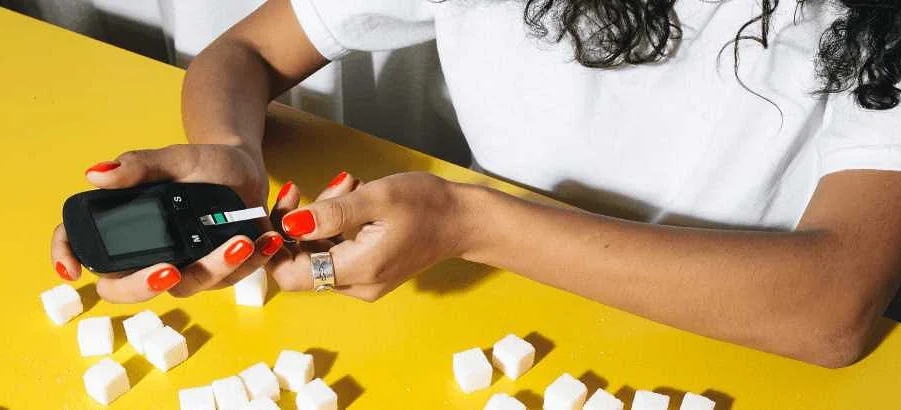8 Signs: How to Track the Development of Prediabetes
Learn about 8 key signs that can help you track the development of prediabetes, a condition that can lead to type 2 diabetes. Recognizing these signs early on can help you take preventative measures and make lifestyle changes to avoid the onset of diabetes.
Prediabetes is a condition that often goes unnoticed, but can have serious health consequences if left untreated. It is a precursor to type 2 diabetes, and affects millions of people worldwide. The good news is that prediabetes can be detected early on, allowing individuals to make necessary lifestyle changes to prevent the onset of full-blown diabetes. By recognizing the signs and symptoms of prediabetes, you can take proactive steps towards maintaining your health and well-being.
1. Frequent urination: One of the earliest signs of prediabetes is an increase in the amount of urine produced. If you find yourself visiting the bathroom more often than usual, it may be a cause for concern.
2. Increased thirst: Prediabetes can cause a feeling of constant thirst, as your body tries to compensate for the excess loss of fluids. If you find yourself reaching for a glass of water more frequently than before, it may be a sign to get your blood sugar levels checked.
3. Fatigue: Feeling tired and worn out, even after a full night’s sleep, can be a sign of prediabetes. The body’s inability to efficiently use glucose for energy can leave you feeling drained and lacking in energy.
4. Weight gain: Unexplained weight gain, especially around the waistline, can be a red flag for prediabetes. This is because insulin resistance, a key characteristic of prediabetes, can lead to weight gain and difficulty in losing excess pounds.
5. Increased hunger: A persistent feeling of hunger, even after eating a meal, can be a sign that your body is not effectively using the glucose from food. This can lead to overeating and further exacerbate the development of prediabetes.
6. Slow healing of wounds: Prediabetes can impair the body’s ability to heal wounds and cuts. If you notice that minor injuries take longer to heal than usual, it may be a sign that your blood sugar levels are out of balance.
7. Blurred vision: High blood sugar levels can cause changes in the fluid levels of the eye, leading to blurred vision. If you find that your vision is regularly blurry, it is important to get it checked by a healthcare professional.
8. Tingling or numbness: Prediabetes can cause nerve damage, resulting in tingling or numbness in the hands and feet. This condition, known as peripheral neuropathy, can develop gradually and is often one of the first signs of prediabetes.
By being aware of these signs and symptoms, you can take control of your health and seek appropriate medical advice if needed. Remember, early detection and intervention are key in preventing the progression of prediabetes to type 2 diabetes. Take charge of your health today and make the necessary lifestyle changes to keep prediabetes at bay.
Increased thirst and urination

Prediabetes can cause an increase in thirst and urination, known as polydipsia and polyuria, respectively. When blood sugar levels are high, it can lead to the kidneys working overtime to filter out the excess sugar in the blood. This process can result in increased urine production and, subsequently, increased thirst as the body tries to replace lost fluids.
If you find yourself frequently feeling thirsty and needing to urinate more often than usual, it could be a sign of prediabetes. It’s important to pay attention to these symptoms and consult with a healthcare professional to get tested for prediabetes or diabetes.
In addition to increased thirst and urination, other signs of prediabetes include:
- Feeling tired and fatigued
- Unexplained weight loss or weight gain
- Increased hunger
- Blurry vision
- Slow-healing wounds
- Frequent infections
- Tingling or numbness in the hands or feet
If you experience any of these symptoms, it’s important to take them seriously and seek medical advice. Catching prediabetes early can help prevent the onset of type 2 diabetes and its associated complications.
Unexplained weight loss or gain

Unexplained weight loss or gain can be a sign of prediabetes. If you notice a sudden and significant change in your weight without any changes in your diet or exercise routine, it’s important to pay attention.
Weight loss can occur as a result of the body’s inability to properly use insulin, leading to the breakdown of fat and muscle for energy. On the other hand, weight gain can occur due to insulin resistance, which causes the body to store excess glucose as fat.
If you experience unexplained weight loss or gain, it’s recommended to speak with your healthcare provider. They can help determine if prediabetes or another underlying condition is causing these changes and develop a plan to manage your health effectively.
Remember: Any significant changes in weight should not be ignored, as they can be an early indication of prediabetes or other health issues. Monitoring your weight regularly and seeking medical advice if necessary can help you stay on top of your health and make informed decisions about your well-being.
Fatigue and frequent infections
One of the signs that prediabetes may be developing is an increase in fatigue and frequent infections. When blood sugar levels are consistently high, it can lead to a lack of energy and increased feelings of tiredness. This is because the body is not efficiently using glucose as a source of energy.
In addition to fatigue, prediabetes can also weaken the immune system, making individuals more susceptible to infections. High blood sugar levels can impair the function of white blood cells, which are responsible for fighting off bacteria and viruses. As a result, people with prediabetes may experience more frequent infections such as urinary tract infections, respiratory infections, and skin infections.
If you notice that you are feeling unusually tired and are getting sick more often than usual, it may be a good idea to get your blood sugar levels checked by a healthcare professional. Early detection and intervention can help prevent the progression to full-blown diabetes and its potential complications.
Blurred vision and slow healing of wounds
One of the signs that may indicate the development of prediabetes is blurred vision. High levels of glucose in the blood can cause the lenses in the eyes to swell, resulting in a temporary change in vision. If you notice that your vision is becoming blurry, it is important to see an eye doctor to determine the underlying cause.
Another symptom of prediabetes is slow healing of wounds. High blood sugar levels can affect the body’s ability to heal itself effectively. This can result in cuts, scratches, or other injuries taking longer to heal than usual. If you find that your wounds are taking an unusually long time to heal, it may be a sign to get your blood sugar levels checked by a healthcare professional.
Both blurred vision and slow healing of wounds can be indicators that your body is not managing glucose levels properly. It is important to pay attention to these signs and seek medical advice if you are concerned.
Tingling and numbness in hands and feet
One of the early signs of prediabetes is tingling and numbness in the hands and feet. This sensation is known as peripheral neuropathy and occurs due to damage to the nerves that carry signals to and from the hands and feet.
When blood sugar levels are consistently high, the excess glucose can damage the nerves over time. Tingling and numbness are often the first noticeable symptoms of this nerve damage.
Individuals with prediabetes may experience a pins-and-needles sensation, a tingling feeling, or complete numbness in their hands and feet. This can make it difficult to perform everyday tasks and can also impact balance and coordination.
If you are experiencing tingling and numbness in your hands and feet, it is important to consult a healthcare professional. They can perform tests to determine if you have prediabetes or another underlying condition that may be causing the symptoms.
Managing prediabetes and preventing further nerve damage involves making lifestyle changes such as maintaining a healthy diet, regular exercise, and weight management. In some cases, medication may be prescribed to help control blood sugar levels and alleviate symptoms.
| Tingling and numbness in hands and feet | Early signs of nerve damage due to high blood sugar levels |
Darkened skin patches and acanthosis nigricans
If you notice areas of your skin becoming darker, especially around the neck, armpits, groin, and joints, it could be a sign of prediabetes. These darkened skin patches are known as acanthosis nigricans and are caused by an increase in insulin levels in the body.
Acanthosis nigricans is most commonly seen in people who are overweight or obese, as excess fat can lead to insulin resistance. The darkened patches may feel velvety to the touch, and they can gradually spread to other areas of the body.
If you have noticed any changes in your skin color or texture, it is important to consult with a healthcare professional. They can evaluate your symptoms and determine if further testing is needed to diagnose prediabetes or other underlying conditions.
It is also worth noting that acanthosis nigricans can occur in individuals without prediabetes or diabetes, so it is not a definitive indicator of the condition. However, it is still an important sign to be aware of and discuss with your doctor.
If you are diagnosed with prediabetes, taking steps to manage your blood sugar levels through lifestyle changes can help prevent or delay the onset of type 2 diabetes. This may include making dietary adjustments, increasing physical activity, and losing weight if necessary.
Remember, early detection and intervention are key in managing prediabetes and preventing its progression to type 2 diabetes. Regular check-ups with your healthcare provider can help monitor your blood sugar levels and overall health.
Disclaimer: This article is for informational purposes only and should not be considered medical advice. Always consult with a qualified healthcare professional for diagnosis and treatment options.